Marie-Agathe Charpagne
Accurate reconstruction of EBSD datasets by a multimodal data approach using an evolutionary algorithm
Mar 08, 2019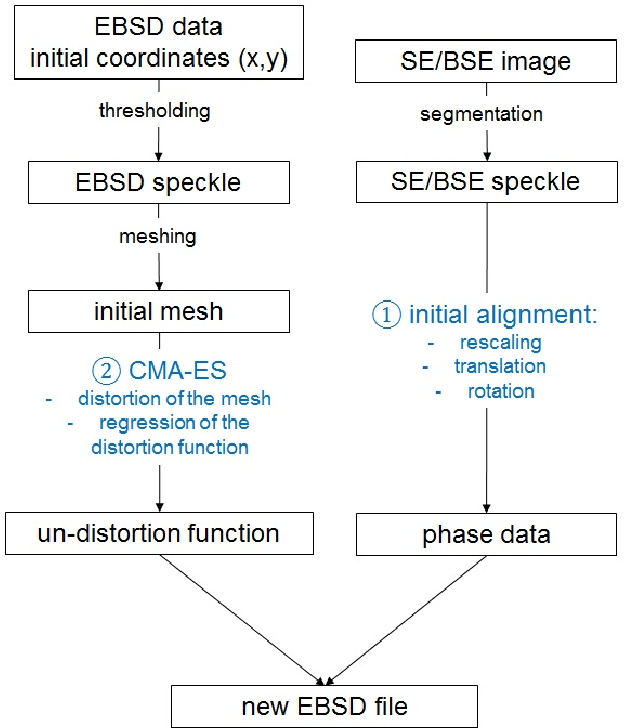
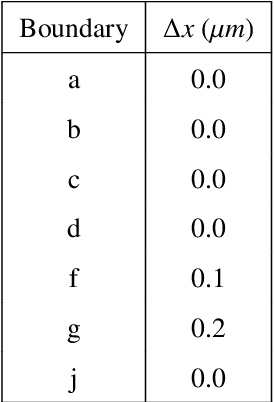
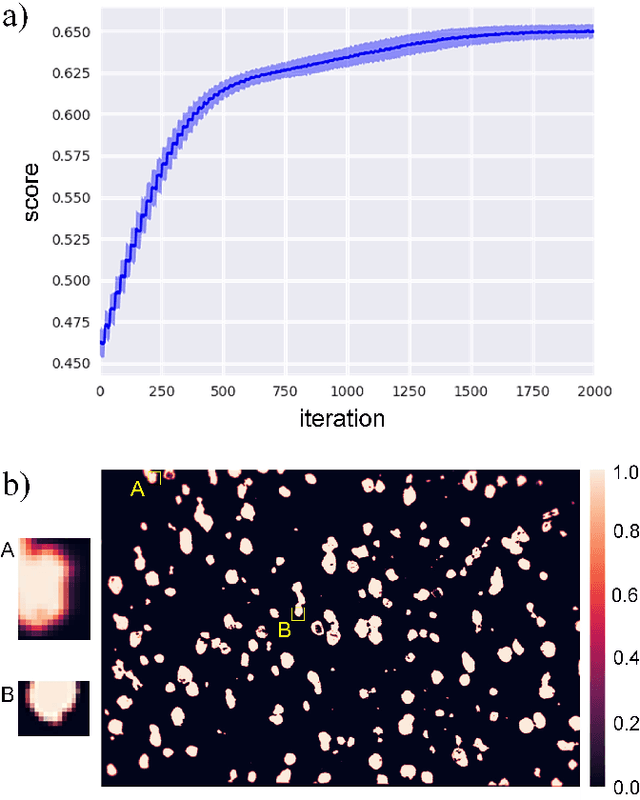
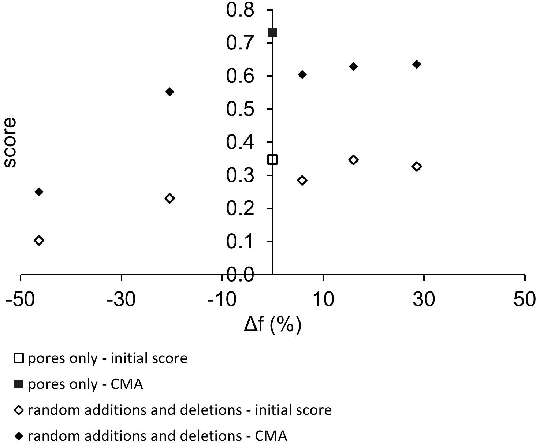
Abstract:A new method has been developed for the correction of the distortions and/or enhanced phase differentiation in Electron Backscatter Diffraction (EBSD) data. Using a multi-modal data approach, the method uses segmented images of the phase of interest (laths, precipitates, voids, inclusions) on images gathered by backscattered or secondary electrons of the same area as the EBSD map. The proposed approach then search for the best transformation to correct their relative distortions and recombines the data in a new EBSD file. Speckles of the features of interest are first segmented in both the EBSD and image data modes. The speckle extracted from the EBSD data is then meshed, and the Covariance Matrix Adaptation Evolution Strategy (CMA-ES) is implemented to distort the mesh until the speckles superimpose. The quality of the matching is quantified via a score that is linked to the number of overlapping pixels in the speckles. The locations of the points of the distorted mesh are compared to those of the initial positions to create pairs of matching points that are used to calculate the polynomial function that describes the distortion the best. This function is then applied to un-distort the EBSD data, and the phase information is inferred using the data of the segmented speckle. Fast and versatile, this method does not require any human annotation and can be applied to large datasets and wide areas. Besides, this method requires very few assumptions concerning the shape of the distortion function. It can be used for the single compensation of the distortions or combined with the phase differentiation. The accuracy of this method is of the order of the pixel size. Some application examples in multiphase materials with feature sizes down to 1 $\mu$m are presented, including Ti-6Al-4V Titanium alloy, Rene 65 and additive manufactured Inconel 718 Nickel-base superalloys.
* A short version of this paper exists towards people working in Machine Learning, namely arxiv:1903.02982
Correction of Electron Back-scattered Diffraction datasets using an evolutionary algorithm
Mar 07, 2019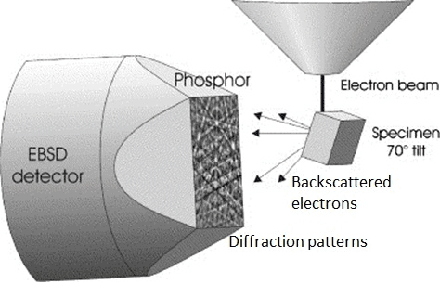
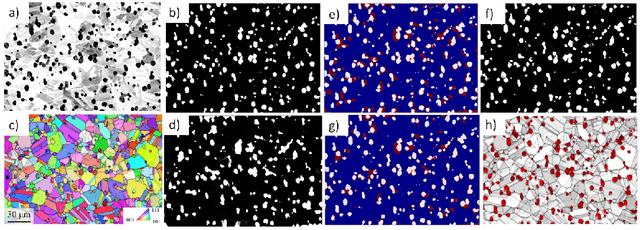
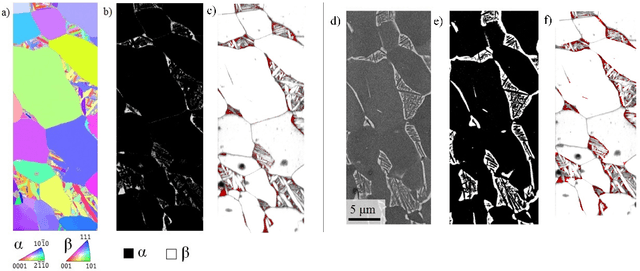
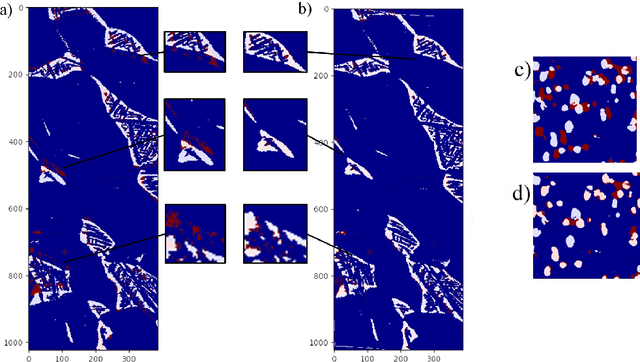
Abstract:In materials science and particularly electron microscopy, Electron Back-scatter Diffraction (EBSD) is a common and powerful mapping technique for collecting local crystallographic data at the sub-micron scale. The quality of the reconstruction of the maps is critical to study the spatial distribution of phases and crystallographic orientation relationships between phases, a key interest in materials science. However, EBSD data is known to suffer from distortions that arise from several instrument and detector artifacts. In this paper, we present an unsupervised method that corrects those distortions, and enables or enhances phase differentiation in EBSD data. The method uses a segmented electron image of the phases of interest (laths, precipitates, voids, inclusions) gathered using detectors that generate less distorted data, of the same area than the EBSD map, and then searches for the best transformation to correct the distortions of the initial EBSD data. To do so, the Covariance Matrix Adaptation Evolution Strategy (CMA-ES) is implemented to distort the EBSD until it matches the reference electron image. Fast and versatile, this method does not require any human annotation and can be applied to large datasets and wide areas, where the distortions are important. Besides, this method requires very little assumption concerning the shape of the distortion function. Some application examples in multiphase materials with feature sizes down to 1 $\mu$m are presented, including a Titanium alloy and a Nickel-base superalloy.
 Add to Chrome
Add to Chrome Add to Firefox
Add to Firefox Add to Edge
Add to Edge